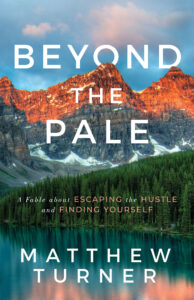When it comes to good storytelling, look no further than Walt Disney and his epic empire. Of course, Disney are rather apt at sharing good stories through the media of books and movies and fairytales, but this isn’t my focus in today’s post. Oh no, I choose to focus on Disney and their overall Brand Storytelling ways; the manner in which they hook us, immerse us, and affect our minds in a mind-boggling manner.
This is Kid Turndog mere minutes after he woke up one morning:
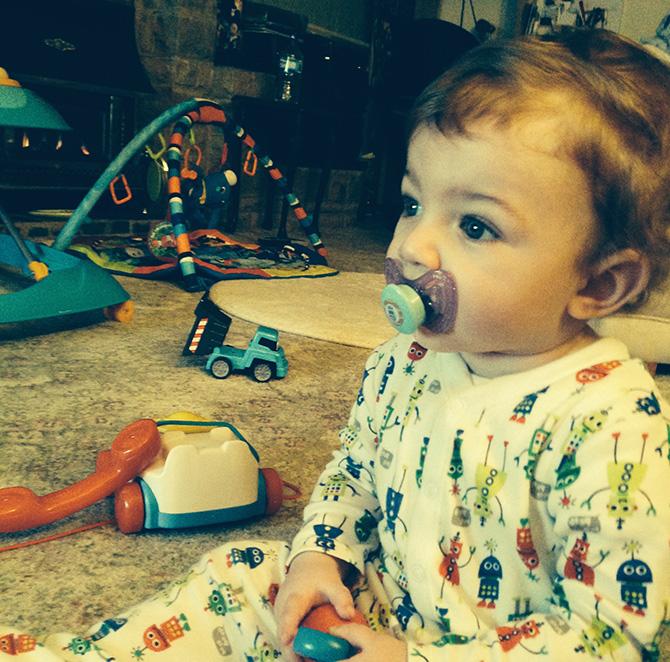
Does he look at me with such longing? Or his Grandma? Or Grandpa? Heck no, he reserves this kind of concentration for Mickey Mouse and his wonderful funhouse. And here he is several minutes later…
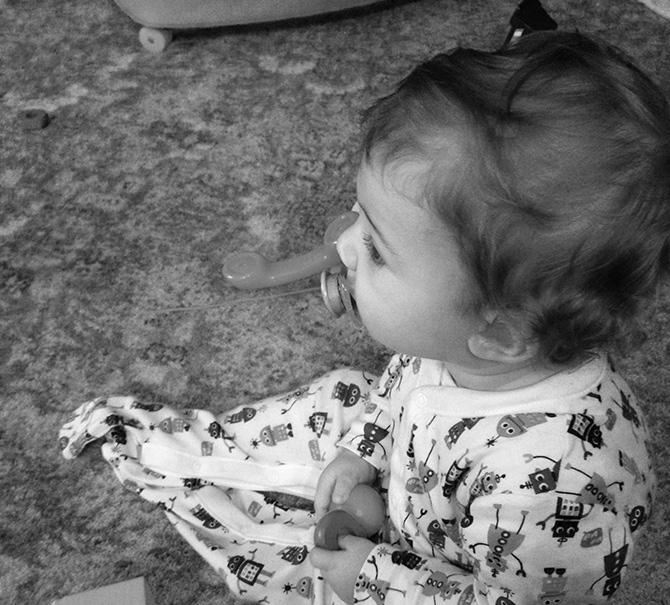
Hook. Line. Sinker. Disney grabs us with their storytelling like few other brands can. And I don’t mean with their cartoons and movies, because at the time of this picture, Kid Turndog is thirteen-months-old. He’s still a baby. He cannot decode what a good story is and isn’t. He also doesn’t care whether it’s Disney or Nickelodeon or some other channel. He doesn’t care for movies or books.
He doesn’t care for brands and their storytelling, either. He isn’t programmed like us adults to think, “Hmmm, this is a Chanel advert, so I should listen. It’s obviously good stuff.“
Babies work off pure reaction. The kind we’re born with. It’s mother nature ticking away, so when a Brand or Advert or Book or Story connects with my little boy, I take a step back and wonder. Because they’ve found a way to connect with our most fundamental feelings. At this age, Kid Turndog hadn’t developed his personality all that much. I know every person is different, and each baby is, too, but at one-year-old, we’re all ultimately the same. Time hasn’t had a chance to affect us yet.
And this is why I write about Disney and their Storytelling ways, because they don’t just create good stories (The Lion King, Toy Story, Peter Pan...), but stories that touch us at an age when we should be untouchable. Kid Turndog loves Disney Junior, and when Mickey or Jake the Pirate or Doc McStuffin say hello, he stops in his tracks and stares.
There’s something special about this, because grabbing and keeping the attention of an infant is no easy feat. So how do Disney do it through their storytelling? This is my aim today…
HOW DISNEY BRAINWASH US THROUGH INCREDIBLE STORYTELLING
It’s no Surprise Disney merged with Pixar, because Pixar are the type of storytelling success story few can match. There’s a Pixar Storytelling Formula, and they bring together adults and children alike each and every time. How many other movies achieve this? How many books? How many brands can share their brand story and immerse a multitude of generations?
It’s rare to say the least, but Pixar achieve it. They seem to have mastered it, but not before Disney had. Disney has storytelling down to a tee, and again, I don’t mean through their actual stories. I’m talking about the big picture… their entire brand… the way they hook us with their story at all times, and in every nook and cranny.
Because Kid Turndog doesn’t play by the same rules as I do. No babies does. He feeds off pure reaction and what mother nature gives him. He’s governed by how we’ve evolved as a species, and although each day nurtures him a little more – pushing advertisements into his face, sharing its rules, saying what he can and can’t do – he lives with the kind of freedom us adults can’t comprehend.
So when Disney catches and keeps his attention, I take notice. When they form a bond with him whilst I’m still figuring it out, I tip my cap. When they achieve this across countless babies, in numerous lands and languages, spanning generations… well, it’s hard to not be a tad impressed.
I’m only focussing on three storytelling techniques today, but there are many more. As I watch Disney Junior each weekend, this is what I notice, and although I hate Disney for brainwashing my kid, I can’t help but offer them a hearty high-five.
1: MUSIC & COLOUR
I have no idea how a baby’s mind works. Jesus, I wish I did for it would make meal time a much easier process. I imagine it’s a complex machine, far more complexing than our adult version. After all, babies come into this world with no preconceptions or bias or knowledge. How wonderful, yet at the same time, how bleeding difficult it must make every single aspect of life.
What I notice when I watch Disney Junior is, how colourful EVERYTHING is. Here are just a few of the programmes and characters Kid Turndog and I cross paths with each weekend:
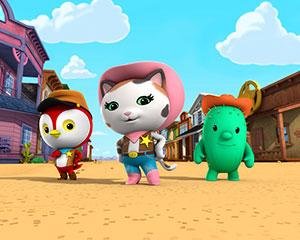
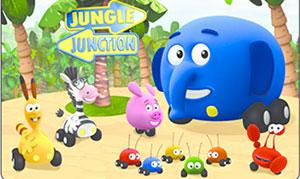
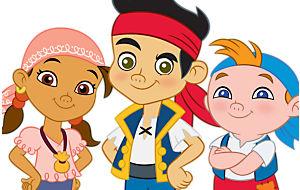
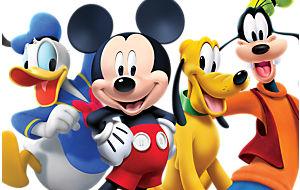
Look how vibrant the colours are. Each one pops, and although many people underestimate the power of visual storytelling, they do so at their peril. Because visuals – and in particular, colour – plays a huge role in how our ape-like minds tick.
I mean no disrespect to our little bundles of joy when I say this, but a baby’s mind is extremely ape-like. It takes time for our brain to develop, so in our earliest of days, instinct dictates everything we do. Colour helps us at a young age, and allows us to differentiate one object from another.
Picture a baby’s toys and books, and you appreciate the importance colour plays in a child’s development. Disney know this, and they use colour to great effect. They place red next to black, fill the screen with as many yellows and oranges and bright blues as possible. But not to an extent where it overwhelms, because a child’s mind doesn’t know how to cope with overwhelming chaos (after all, everything is rather overwhelming at this age).
And it doesn’t stop with colour, because music and sound play a GIGANTIC storytelling role, too. Would you like to know which songs are stuck in my head on a Tuesday afternoon as I walk through town? The Doc McStuffin theme song, or this song from Jake, or this heartwarming effort from Sofia.
[Tweet “”And it doesn’t stop with colour, because music and sound play a GIGANTIC #storytelling role, too””]
Kid Turndog’s attention span is around 7 seconds (on a good day), but as soon as he hears a sound or song he likes, he stops in his tracks and stares at the screen. Disney pull off this miraculous feat time-and-time again. Sound, like colour, connects with our ape-like mind and indulges our ape-like attention spans.
Fancy words don’t achieve this, nor do snappy promotions or calls to action. Kid Turndog doesn’t care for such nonsense, but he loves Disney because it connects with him through sound and colour. And you may think this has nothing to do with you, but it does, because we’re all governed by the same ape-like mind mentalities as Kid Turndog and every other baby on the planet.
Joanne Wiebe of Copyhackers refers to it as our Lizard Brain, but it’s the same thing. Joanne’s an expert when it comes to creating Call to Action Buttons and messages. The ways she uses colour is the same as Disney does. It’s vibrant and contrasting and pops. Every colour has purpose, and designed to grab your ape-like mind and say, “LOOK AT ME!“
You shouldn’t underestimate the power of colour and music combined, and Disney understand this. Next time you watch a Disney movie or go into a Disney Store, or see an advert on TV, consider the music and colour, and how it catches your attention and keeps it. If it works for you, imagine how powerful it is to little baby.
Oh yes, Disney don’t just create compelling movies and stories, but indulge our inner-most feelings with their storytellings ways at all times. It’s catnip for youngsters, but rather powerful to us old folk, too – which we’ll get into soon…
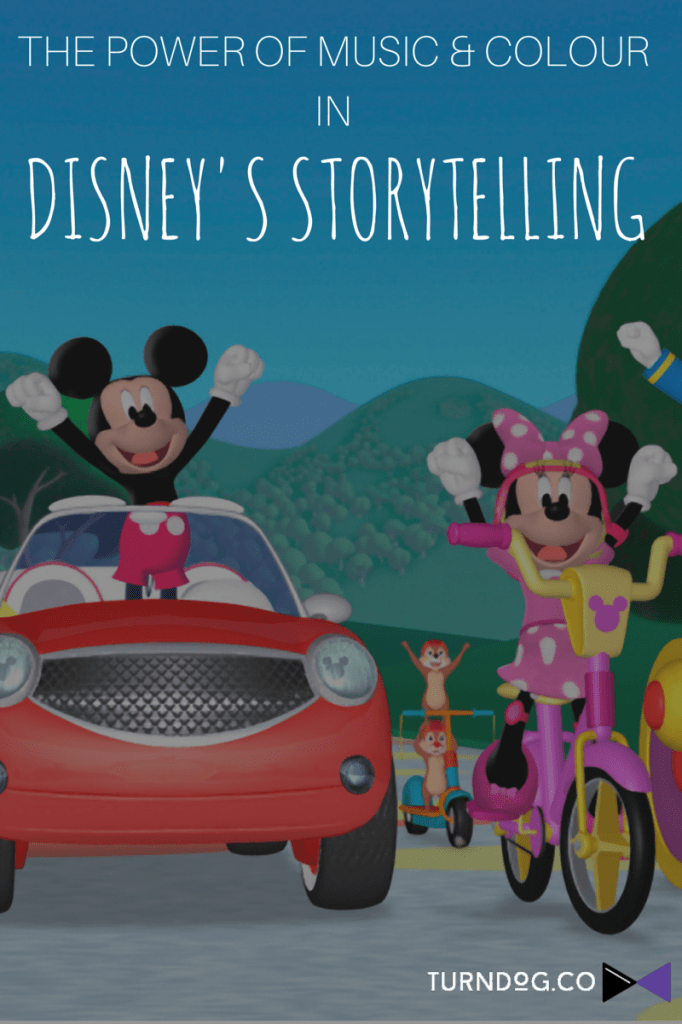
2: THEY SPEAK TO US
Something else I’ve noticed whilst watching a great deal of Disney Junior (oh yes, I find myself watching the programs, despite the fact it shouldn’t appeal to me), is how the majority of characters speak to the screen. Not all of them do, but the programs Kid Turndog loved from the very beginning (Mickey Mouse & Jake and the Neverland Pirates) literally speak to the screen.
What a powerful storytelling technique, because when two characters speak to one another, it’s rather passive and standoffish. But as soon as they speak to the screen – and therefore to us – it’s inviting and intriguing.
Here are a few examples of what I mean…
[su_youtube url=”https://www.youtube.com/watch?v=aRwsHHHY7us”]
[su_youtube url=”https://www.youtube.com/watch?v=XmnV_C73XEo”]
[su_youtube url=”https://www.youtube.com/watch?v=xNcbZJTeYR8″]
Mickey and co speak to the screen as though they’re speaking to our kids in person. In our ape-like mind, there’s a difference between someone simply speaking, and speaking TO US. I don’t think it’s coincidence that Kid Turndog took to Mickey and Jake before any other character. These are programs that sung to him, spoke to him, and asked him to join the journey.
Did he understand what they were saying? Nope!
But he understood they were speaking to him, just like his mummy and daddy does. Again, this isn’t only applicable to babies, but all of us. A huge storytelling component is the actual storyteller. Most people forget this, but the storyteller plays a massive role, and the best-of-the-best are those who make eye contact and possess a certain inviting aura.
[Tweet “”A huge storytelling component is the actual storyteller. Most people forget this…””]
Michael Port is a master storyteller on stage, and it’s no surprise he used to be an actor. Actors are taught to posses these inviting and invigorating skill-sets, and it goes a long way when it comes to storytelling. Because just like Kid Turndog stops in his tracks when Mickey speaks to him on screen, we stop and take notice to those who speak to us.
But it doesn’t stop with the storyteller, because in its most simplistic form, storytelling takes one of two directions:
- Active
- Passive
A brand story that speaks in first person differs to one in third person – even if they share the exact same content and message. An active approach means you show and share and invite, whereas a passive one results in telling and explaining and keeping people on the outside-looking-in.
Show rather than tell is Storytelling 101, but it doesn’t stop with the language you use. There’s something about Disney that I trust (more on this next), and I think it’s because they speak to us. It connects with our ape-like mind, and it certainly tickles Kid Turndog’s imagination.
Simply put, Disney approach storytelling in an active manner, constantly speaking to us, showing us, and inviting us to be part of the adventure. A baby doesn’t have time for passive storytelling, so only active stories spark their imagination. For some reason we develop a tolerance for passive tales as we get older, but it doesn’t mean our ape-like minds like it.
Show, don’t tell. Speak to us, not at us. Involve and invite, just like Mickey ‘F**king’ Mouse.
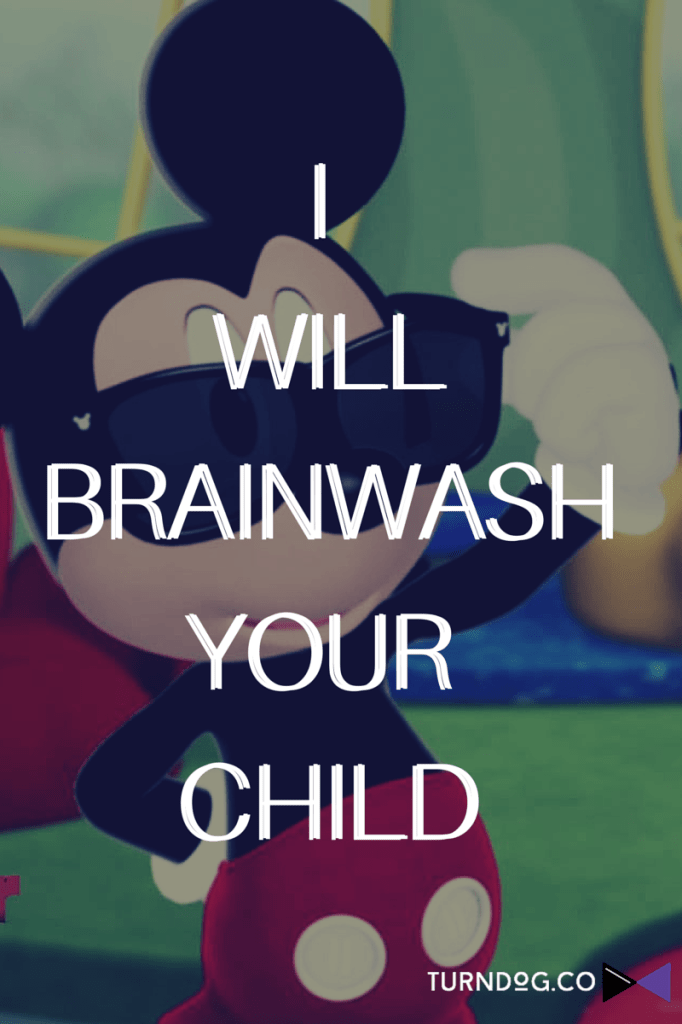
3: LEGACY
A few weeks ago I spoke to my buddy, Reedy. Sitting on a train, I went on-and-on about Kid Turndog and how quickly he’s growing up. I told Reedy about Peppa Pig, and how he’s developed a rather large and unfortunate affiliation towards her.
“I hate Peppa Pig,” I said. “It’s so obnoxious. All they do is jump in puddles and snort.”
“Yeah, I’ve seen that one before. Not good.”
“At least Disney have great music. Plus, I trust Disney. It’s what I grew up with, so I know he’s in safe hands. Peppa Pig… or In The Night Garden… or Teletubbies… that shit’s insane!”
I. TRUST. DISNEY. I. Trust. Disney? Did I just say that???
Later that afternoon, I considered what I said. I trust Disney? The same Disney that warps our childhood with princesses and happy ever afters? The same Disney that will cost me thousands as a father? The same Disney that may or may not sell Star Wars’ soul to the devil?
A strange statement indeed, but here’s the thing: Disney has legacy.
I grew up with Disney and it provided me with The Lion King and countless other happy memories. What has Peppa Pig offered me? Or the Teletubbies? Crap like that makes my head hurt, and I have no loyalty towards such shows.
As a father, I’m protective over what Kid Turndog does and doesn’t experience. I know he’ll be into his own type of music and TV soon enough, but right now it’s MY duty to ensure he gets a balanced diet (not just food, but of LIFE). Reedy agreed with this, too, saying something along the lines of, “You know what you’re getting with Disney. It worked for us, so it can work for your son, too.”
Because Disney seduced me with its storytelling during my own childhood, I’m biased as a father today. On the outside I say, “Hell no. I don’t like Disney. It’s expensive and teaches kids to think they can become princesses and kiss frogs.”
Yet on the inside, I say, “I trust Disney. If I’m going to let my son watch anything, it may as well be from the same people I grew up with.“
[Tweet “”Because Disney seduced me with its #storytelling as child, I’m biased as a father today.””]
Disney’s legacy may be its most powerful storytelling trait of all. Because they seduced my generation with their storytelling ways, we’re unconsciously loyal towards them. But it also helps us to form bonds with our children, because Kid Turndog and I can watch The Lion King together.
Maybe he’ll like this movies as much as I did. Plus, I get to relive some childhood nostalgia myself. I get to read Peter Pan and Dumbo and the books my parents read to me some twenty-odd-years ago. Disney’s legacy lives within me, and because of this, it lives within my son, too.
But you cannot simply create legacy. You can use and abuse colour and music in your storytelling world, and speak to your audience and develop an active brand story, but you cannot wake up one morning and say, “We’re going to create a legacy today!“
The thing is… We all have a legacy. As people… As brands… As individuals with stories to share…
Disney embraces its heritage at all times, and through the power of Mickey Mouse and his old-school pals, they ensure they keep our trust (as parents, grandparents, guardians…). You may not have Disney’s legacy, but you do have your own, and you have the power to set a new precedent today. With a mindset like this, your future self will be one powerful son-of-a-gun!
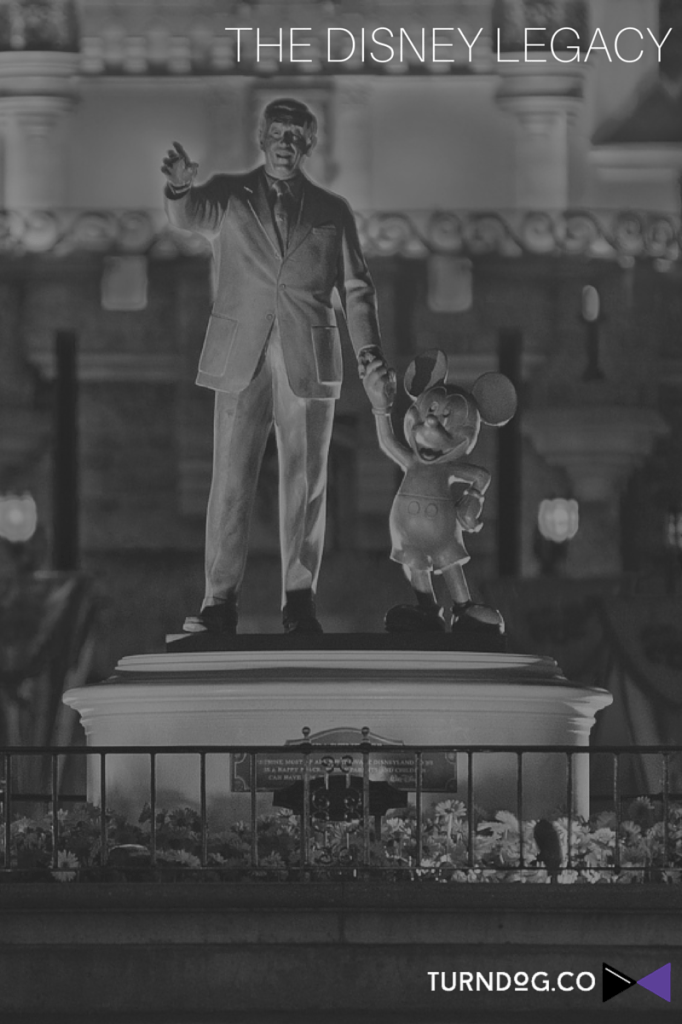
DISNEY = STORYTELLING WE CAN ALL LEARN FROM
I may refer to Kid Turndog throughout this post, and his wee-baby mind, but don’t for a second think it doesn’t relate to you and your customer. I’m governed by my ape-like mind. You’re governed by your ape-like mind. Your customers are, too, as is the human-race. I’m no brain expert, but I do know we live in an uber-fast-paced society with far too many distractions to keep up with.
As such, our ape-like mind makes our most fundamental decisions. It reacts in an instant. It loves what it loves, and much of this is embedded deep within our DNA.
When Disney attracts and keeps my son’s attention, I take notice because it’s the kind of storytelling we’re all drawn towards deep down. I know this, because I find myself humming the songs, watching the programs, and writing a blog post about Mickey ‘F**king’ Mouse!
Colour and music play important roles in our storytelling ways. Speaking to, and showing, and involving our audience does, too. We all have a legacy and a special something, and most of us under appreciate it and underuse it.
I come across too many businesses with a rich heritage yet a boring, uninspiring, and lifeless brand story. This frustrates the hell out of me, because our legacy and heritage is one of strongest storytelling traits we own (and ever will). This is where greatness lies, and this is where loyalty, nostalgia, and trust is built. Disney do this better than most, but we can all replicate it to an extent.
So in many ways, I hate you, Disney. You brainwash my little boy and have tricked me into trusting and loving you. You’re a manipulative little son-of-a-gun, and don’t you forget it.
But on the other hand, you’re not Peppa Pig. For this, I’m thankful, and I tip my cap to your storytelling epicness.
At least, these are my thoughts, and what I’ve noticed watching Disney Junior on a weekend. I’d love to hear your own, so message me on TWITTER or FACEBOOK and spark a conversation. It’s been a darn pleasure, and here’s to your own storytelling ways.

hi, i’m turndog and I wrote this article … i am a writer, ghostwriter, anti-hustler & a guy on a mission to ensure you too escape the hustle — come be part of the [no hustle] movement


